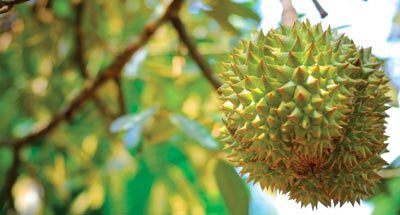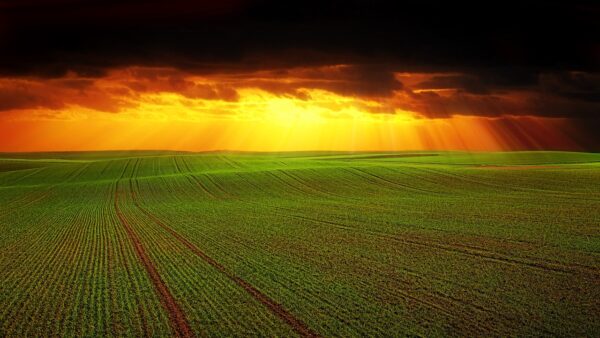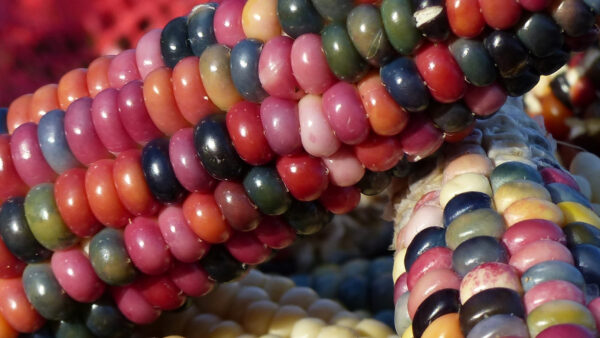Surviving Durian
The Global Crop Diversity Trust explores the challenges with global funding to improve nutrition.
I first encountered the word “durian” on a visit to the Philippines in 1985. There on the back of the hotel room door, next to the fire escape instructions, was the ominous warning: No Pets or Durians Allowed.
What, I asked myself, is a durian? I was to find out soon enough. Pollinated by bats, banned on public transport due to a fragrance—akin to an open sewer—that can be detected a city block away, the fruit of the durian tree is not, to put it mildly, everyone’s cup of tea. Fancying myself to be a lover of all diversity, it was embarrassing to find something so revolting that it almost made me gag.
And while popular in Asia, the durian has, unsurprisingly, not become a big hit globally. Despite the fact that annual production exceeds 1.4 million tonnes, it is what people in my field consider an underutilized, underappreciated, neglected, threatened, orphan, minor, niche crop. There is a politics to which of these adjectives is used. As some wag is sure to point out, many such crops are “minor” because they taste bad. The durian notwithstanding, this is but a small part of the story.
Bringing Diversity to Diet
Hunger and malnutrition are not synonymous, as obesity rates and vitamin deficiencies demonstrate. Bioversity International, an international institute working on issues of agricultural biodiversity, points out that good balanced diets are not defined solely by calorie counts. They are certainly promoted indirectly by the use of crop diversity to improve crop yields and nutritional content. But they are also promoted directly by use of diverse species, i.e. not just different crop varieties, but different crops.
A minor crop on the world stage may play, or potentially play, a major role regionally, nationally or locally. That role might be as calorie provider, but it is just as likely to be as a source of essential micro-nutrients that if not present will lead to stunted growth, poor mental development and a lifetime of personal health and productivity problems.
When I started working in this field back in the 1970s, I was unaware of a single crop breeding program working on “nutrition.” Now, there are a number seeking to “biofortify” major crops, to provide VitaminA-rich maize and iron-rich beans and millet varieties to African farmers, to cite a few of many initiatives.
Yet plants don’t wake up in the morning and decide to produce more Vitamin A to help the estimated 250,000 to 500,000 children in developing countries that go blind every year due to this deficiency, or the one million who die due to weakened immune systems. Vitamin A enriched crop varieties are possible only if the genetic trait associated with Vitamin A production is found amongst the crop diversity that has been conserved, accessed, and then successfully used by someone in a plant breeding program. That simple but life-changing chain has four elements: conservation of diversity, identification of diversity, access of diversity and use of diversity. In other words, it depends on conservation and its financing, on information systems, on access from the relevant seed bank and, finally, on the existence of a skilled, dedicated plant breeder.
Sadly, all four elements are chronically underfunded, even when it comes to major staple crops.
And minor crops struggle against several further handicaps. Of the 150 crops that historically have entered into world commerce, fewer than half have collections that total 1,000 samples globally. That might seem like a lot of diversity. But, contrast it to rice that has more than 400,000. Trust me, if you are a plant breeder and you want to work with a crop, and introduce new traits, you want as much diversity at your fingertips as possible. For most “minor” crops, adequate collections simply do not exist. Strike one.
Because these crops are generally not covered by international legal agreements that guarantee access to the genetic resources of major crops, a would-be plant breeder—or farmer—would find it legally impossible to assemble an adequate collection for breeding purposes. Strike two.
And, because the crops are of lesser economic importance, there are fewer of those breeders. Plant improvement efforts are unattractive to the private sector and less than sexy to development agencies. Strike three.
The combined effect of these barriers is that we are unlikely to be able to capitalize on the economic and nutritional potential of these crops. The problem of access alone will discourage the initiation of new breeding programs for virtually all the “minor” crops. With limited financial means, institutions working on conserving diversity and making it available, including the Global Crop Diversity Trust, focus first and by necessity on securing the diversity of major crops.
In the face of the evidence it is inexcusable that most global funding to improve nutrition still undervalues the contribution of crop varieties as well as the role that minor crops play—and thus virtually ignores the importance of crop diversity conservation, plant breeding, and even agriculture itself! One need not over-simplify a complex problem. Addressing global hunger and malnutrition is no easy matter. Doing so effectively without crop diversity, however, is more than complicated. It’s impossible.
And yes, if a new durian variety comes out of this—albeit one with a different taste, smell, texture and appearance—I could even come to like it. I once encountered a Thai type that seemed headed in this direction. Proving that, where there is crop diversity, there is hope.
Editor’s Note: Reprinted with permission from the Global Crop Diversity Trust
Happenings at the Trust
Much of the trust’s project work has been aimed at creating a global system for crop diversity conservation. Projects have been carried out in over 80 countries, in partnership with 130 institutes working with over 270 crop collections. To find out more, explore the interactive map at croptrust.org/crop-map.
This article is part of a series produced by the Global Crop Diversity Trust. To find out more about the trust and to sign up to receive these articles regularly, please visit croptrust.org.










